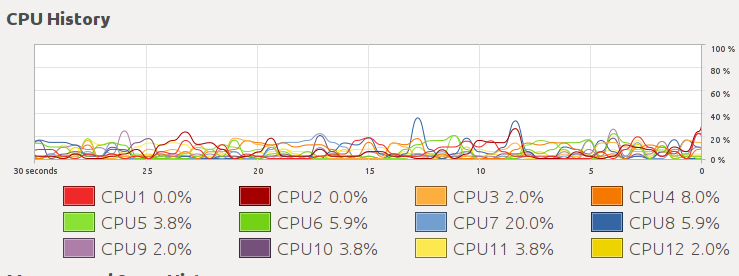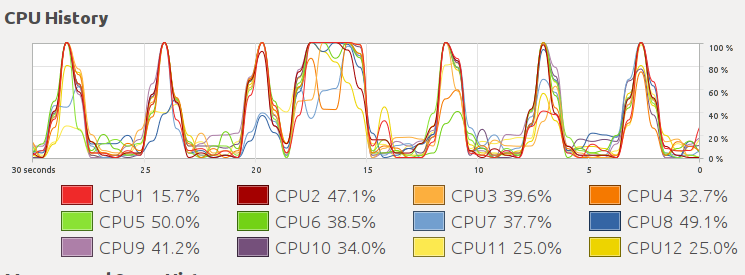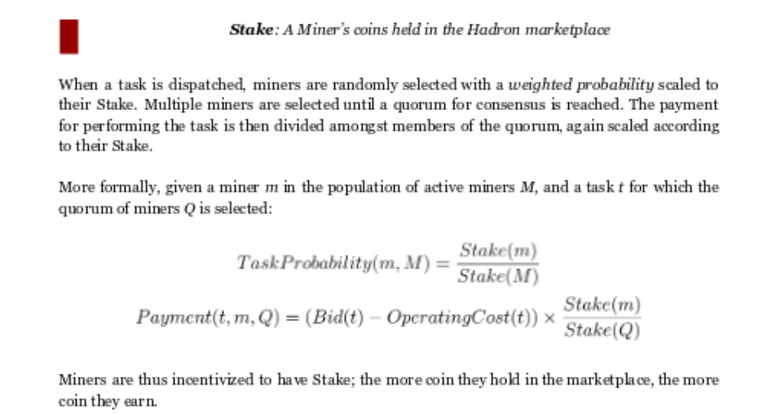This is a comparative review of HadroinCoin. Although I will use some comparisons with Gridcoin, overview will be focused on Hadron Project. Date: February 2018.
Hadron is a pre-ICO project and will issue a ERC20 based token on Ethereum network. Hadron team aims to create a distributed supercomputer for Artificial Intelligence (AI) purposes. There are a few billions of smartphones, laptops, desktops and other computing hardware and they hope to use idle compute power of these computers. In this area both projects, Hadron and Gridcoin, compete for the same resources. They are, however, two very different projects.
| Criterion | Hadron | Gridcoin |
|---|---|---|
| Blockchain | Ethereum | Gridcoin |
| Base coin | Ether | GRC |
| Currency | Hadroncoin token | GRC |
| Protocol | PoW | PoS |
Gridcoin is a blockchain that rewards blockchain miners and currently some participants of some BOINC projects. BOINC platform is an open source independent platform for distributed computing. Miners are rewarded for securing and running (validating transactions etc) blockchain, while BOINC participants for crunching projects data, both groups with newly minted GRC. Crunchers can also be paid with already existing GRCs. Potentially Gridcoin can reward participants of many types of external projects, although no integration processes have been developed yet.
Hadron is a project that plans to build a platform similar to BOINC (focused on AI) and marketplace for tasks, and integrate it with Ethereum as a payment medium, but used currency will be a native token HadronCoin, not a base blockchain coin Ether.
There will likely be a finite number of tokens created that will be used in the marketplace for buying and selling compute power.
Gridcoin is focused on developing and integrating blockchain with external projects. Hadron is focused on building application layer and marketplace for services, while using external blockchain Ethereum for funding and later for transaction and contract processing.
Alpha
Currently Hadron platform is in alpha testing stage. Alpha testers are rewarded with credits that I expect to be exchanged in the future for ERC20 Hadron tokens. Solving hadron workunits takes place in a web browser tab after login on their website, what is easy and user friendly. They call the process ‘mining’, but as there is no transaction validation, no new blocks creation etc., it is not mining as in Gridcoin, Ethereum or Bitcoin but simply rewards for work.
During alpha testing images are sent to workers and using neural network (NN) categorised. Reported broadband usage may reach ~5GB a day, but CPU and GPU resources a barely used.
I’ve tested Hadron ‘mining’ on a medium specd computer. CPU usage is unnoticeable, I was also unable to detect any GPU usage. It allows me to ‘mine’ in up to two browser tabs (it seems one tab = 1 workunit at a time) and my balance grows by ~4 credits per hour. Credits, as they are not blockchain coins or tokens and as such not transferable yet.
CPU usage during Hadron ‘mining’ (there are also several OS processes running and programs open)

For comparison, starting BOINC project kicks in CPU usage immediately (BOINC set to use 10 out of 12 threads 25% of time only due to insufficient CPU cooling).

While running BOINC GPU project GPU usage is reported at 99 – 100%, running just Hadron tabs keeps it at 0% or close.
Rewards
Hadrons economy is based on a finite number of tokens that are to be bought on the market by parties requesting work and paid to compute service providers – crunchers.
According to Hadron whitepaper

(It’s blurry, but its the way whitepaper is displayed on Hadrons website).
Miners with more stake (coins, tokens) get more tasks and earn more money.
While it makes some sense to issue more workunits to miners with higher stake, paying for work adjusted by stake makes no sense from efficiency perspective. If Alice has 100 tokens and Bob has 900 tokens and both have exactly same hardware, Alice will receive only 10% and Bob 90% of the total reward for the task. Therefore, while it endorses token hoarding, it will drive Alice away, as crunching will not be profitable for her.
Apart of the rewards system, there will be a penalty system – returning invalid results will cause the stake to be lost. This might cause serious problems, as due to overheating or memory corruption or other reasons computer may start to return invalid results and cruncher, even though he had no ill intentions, will be penalised.
Gridcoin currently rewards each project equally, but as some projects are more popular than others for the same effort in one project Alice may be rewarded less than in another one. However, she can switch to most profitable project if she’s willing to. There are mixed opinions in Gridcoin community about reward system and other ideas are researched.
There is no penalty system for returning invalid workunits within Gridcoin, but BOINC projects will send less new Wus or ban a bad player.
AI
Interesting aspect is how exactly Hadroin team wants to apply AI?
First, some simple facts about AI. Artificial Intelligence programs are special programs that after writing code need another step called learning. There are hundreds to many thousands parameters (called weights) within AI software, that are tweaked during learning. For example, we want a program to recognize whether there is a cat or a dog in a photo. During learning process, AI reads an image and as an output 1 or 0 - prints dog if close to 1 or cat if close to 0. If a dog A is shown and output is 0.3, weights are changed using a special algorithm to make output greater, let’s say 0.35. Next AI reads a photo of another dog and and adjusts AIs parameters. If for all or almost all dogs output is close to 1 and for cats close to 0 process is ended. This type of AI program are called neural networks (NN). The procedure often needs hundreds to thousands of repetitions and for some problems, like image recognition – many thousands of different images. Thus teaching a NN with 100 thousand images, if learning takes 1000 repetitions (called epochs), NN might need to read and process images, and adjust weights 100 million times. This is a very resource and time consuming process. However, if NN has already learned, to categorize an image it needs to be read and processed once, and might be done on an entry level smartphone.
Unfortunately Hadron team provides very few details on their solution and plans. It seems they expect to execute already taught AIs to for example categorize images. However, this seems fairly inexpensive when compared to AI learning process. I wish to know more about their plans in this area.
Blockchain
Ethereum proved itself to be a successful platform for raising funds via ICOs, but has limited capacity and expensive transactions. On top of that it’s based on PoW protocol, what means a lot of energy and hardware is used to keep blockchain alive. Therefore current Hadron ‘mining’ is far from being green, as globally it inherits energy consumption overhead. These problems are expected to be solved in the future and as Hadron at the moment is seeking developments funds, Ethereum might be an ideal platform for the project.
Closing words
AI is a powerful technology that requires large amounts of compute resources, thus an interesting niche. Informations about Hadron project are scarce and underlying blockchain is currently not suited for a large scale working solution.
I don't like tokens, if you cant operate your own blockchain then you shouldn't be in this space. We already saw that Ethereum will make descisions that suit them best, in my view that puts all tokens at significant risk.
Aside from that as you say if they arent doing the learning process, then this would be a fairly useless project.
They provide little information, this is my conclusion after reading whitepaper. And I also struggle to find any usefulness, if that's the case. On the other hand learning process requires high memory bandwidth, powerful GPUs - distributed computing seems not to be compatible with this, so would be interesting if they have an idea how to solve it. But it would require new NN architecture / learning process, so I'm sceptical...
I dont like the way you have to behave to become accepted as a miner.
Please elaborate, I'm curious.
you have to apply and be accepted to mine it. You also have to do referrals("social proof") to people to get more chance to be accepted or earn better rewards. Just gives off a pyramid scheme stank to the whole hadron thing.
It's not that bad. I haven't done a lot of social media and I've been able to mine 2,000 coins. What other methods could they use to choose who can mine? As anyone with a mobile phone can mine, they had to do something narrow it down for alpha testing.
I've recently been thinking about distributed AI computing and how it may eventually come to BOINC/GridCoin. I'm interested in seeing what Hadron will be able to offer that BOINC/GridCoin doesn't, or can't, and how we can learn from that.
Honestly I don't know what to think of Hadron. They gave away coins for posting on social media etc...
Is this project really legit?
I think its a smart form of airdrop to build a userbase and do marketing. Myself I don't have problem with this.
I don't like that they call 'mining' a process that has nothing to do with normal miners job and 'staking' payouts. Crunchers should be rewarded for work done, not for holding tokens. And most of all, I don't get what kind of work they hope to have in the network - only AI execution?
We'll see what this project brings =) I will watch it carefully.
I think the goal is only AI execution yes.